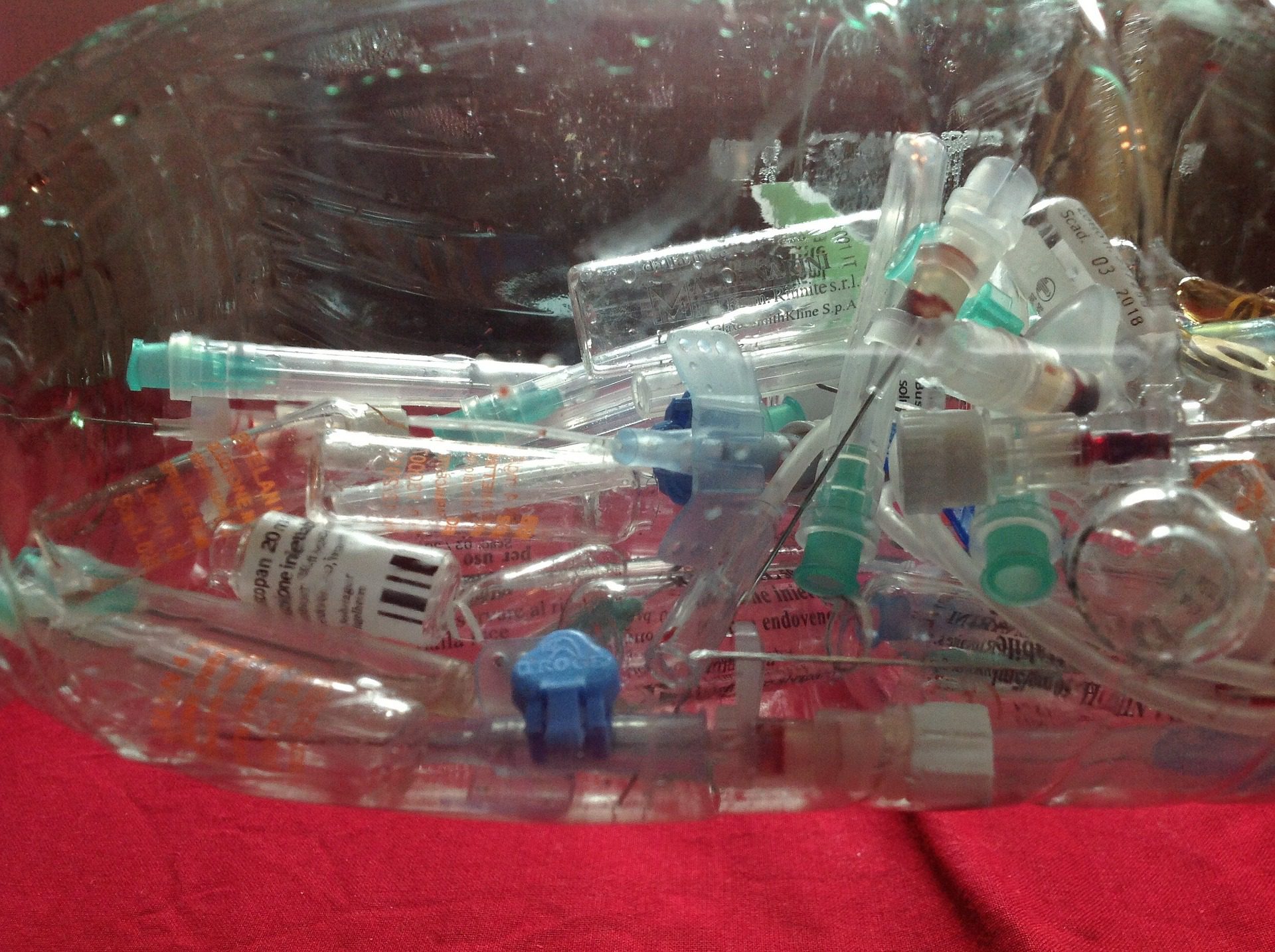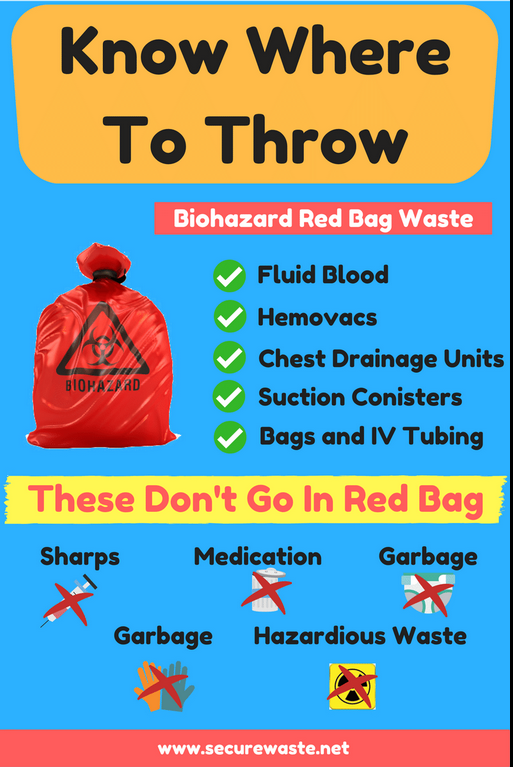Proactive Wellness Solutions: Picking the most effective Medical Waste Removal Near You
Proactive Wellness Solutions: Picking the most effective Medical Waste Removal Near You
Blog Article
The Importance of Proper Medical Waste Disposal: An Overview for Health Care Facilities
Appropriate medical garbage disposal is a critical aspect of medical care center monitoring, guaranteeing the safety and security and wellness of patients, personnel, and the environment. From understanding the various classifications of clinical waste to abiding by governing demands, healthcare facilities must embrace reliable waste segregation techniques and choose appropriate disposal techniques. The significance of correct medical waste disposal goes beyond simple conformity; it is a responsibility that needs recurring training and education and learning for personnel. In this overview, we will certainly explore the different elements of clinical garbage disposal and highlight the necessary actions that healthcare centers need to take. By implementing these methods, medical care facilities can mitigate risks, safeguard public wellness, and add to a cleaner, safer environment.
Understanding Medical Waste Categories
Understanding clinical waste groups is essential for proper disposal in health care facilities. Clinical waste is a wide term that includes different sorts of waste generated in medical care setups, such as hospitals, laboratories, and centers. Categorizing medical waste aids make sure that it is dealt with, stored, and disposed of securely and based on relevant guidelines.
There are several groups of clinical waste that healthcare centers need to be conscious of. These categories consist of infectious waste, sharps waste, pharmaceutical waste, chemical waste, and contaminated waste (medical waste disposal services with WasteX). Each category has details attributes and calls for various disposal methods to lessen the threat of harm to medical care workers, clients, and the atmosphere
Infectious waste, for instance, refers to throw away polluted with potentially transmittable products, such as blood, body liquids, and tissues. Pharmaceutical waste consists of ended or unused medicines, while chemical waste consists of harmful chemicals used in clinical procedures.
Conformity With Regulatory Requirements
Medical care centers need to make sure compliance with governing demands for appropriate clinical garbage disposal. Regulatory bodies, such as the Environmental Protection Company (EPA) and the Occupational Security and Health Management (OSHA), have established policies and standards to safeguard public wellness and the environment. These policies detail the correct handling, storage space, transport, and disposal of medical waste.
Conformity with regulative needs is crucial for healthcare centers to avoid lawful penalties, reputational damages, and potential damage to human health and the atmosphere. Failure to follow these regulations can lead to fines, claims, and also the suspension or abrogation of running licenses.
To make sure compliance, health care centers should establish detailed waste administration programs that include personnel training, correct waste segregation, and the usage of ideal containers and labels. Routine audits and inspections must additionally be conducted to determine any kind of non-compliance issues and address them without delay.
It is vital for medical care facilities to stay up to date with adjustments in regulations and update their waste administration practices appropriately. This can be accomplished by proactively checking updates from regulatory bodies and taking part in training programs and workshops.
Carrying Out Reliable Waste Partition Practices
To ensure appropriate clinical garbage disposal, health care facilities need to apply reliable waste segregation practices. Waste segregation is a vital action in the general waste monitoring process, as it helps minimize the threat of infection, prevents cross-contamination, and ensures the safe disposal of different kinds of waste. Effective waste segregation techniques entail dividing clinical waste into different classifications based on its attributes and prospective dangers.
One typical technique is the partition of sharps waste, such as scalpels and needles, from various other kinds of clinical waste. Sharps waste need to be positioned in puncture-resistant containers to avoid injuries and potential infections. In addition, contaminated materials, such as pharmaceuticals and chemicals, should be separated from general clinical waste to stop environmental contamination.
Appropriate labeling and go to this site color-coding of waste containers are crucial for reliable waste partition. Noticeable and clear tags ought to be put on each container to suggest the sort of waste it has and any kind of special delivery demands - medical waste disposal services with WasteX. Additionally, color-coding can be utilized to differentiate between various waste categories, making it much easier for healthcare personnel to dispose and recognize of waste appropriately
Normal training and education for health care team is essential for the effective execution of waste segregation practices. Team member need to be educated on the different waste classifications, appropriate partition strategies, and the significance of complying with waste monitoring protocols. This will certainly aid ensure compliance and uniformity in waste segregation methods throughout the center.
Finding Appropriate Disposal Techniques
Appropriate option of proper disposal methods is crucial in guaranteeing the eco liable and secure monitoring of clinical waste in health care centers. Healthcare facilities create a variety of clinical waste, consisting of sharps, transmittable waste, pharmaceutical waste, and chemical waste - medical waste removal services. Each kind of waste needs certain disposal techniques to reduce the risk of contamination, injury, and ecological injury
One usual disposal technique for medical waste is incineration. Incineration includes the controlled burning of waste at heats. This method works in damaging virus and reducing the volume of waste. It can launch dangerous toxins right into the air if not effectively controlled.

Chemical disinfection is one more approach used for sure kinds of clinical waste, such as pharmaceutical waste. This approach uses chemicals to reduce the effects of or destroy pollutants. It is important to select chemicals that are secure and eco pleasant.
In many cases, landfill disposal may be ideal for non-hazardous clinical waste (medical waste disposal services with WasteX). Nevertheless, appropriate segregation and packaging are essential to avoid leakage or contamination.
Ultimately, healthcare centers have to carefully evaluate the features of their clinical waste and pick proper disposal techniques that prioritize security, ecological security, and regulative conformity. Routine training and tracking are vital to make sure that medical care staff complies with appropriate disposal methods.

Training and Educating Team on Appropriate Disposal Treatments
Personnel education and learning and training play a vital role in ensuring the appropriate disposal of clinical waste in health care centers. It is vital that all team member, consisting of physicians, nurses, service technicians, and support personnel, receive comprehensive training on correct disposal procedures. This training needs to cover the different kinds of medical waste, their possible risks, and the ideal techniques for handling, setting apart, and taking care of them.
One of the key goals of team education and training is to ensure that all health care professionals comprehend the relevance of proper disposal treatments and the possible effects of improper waste administration. They require to be knowledgeable about the risks connected with clinical waste, such as the transmission of infections and the contamination of the setting. medical waste removal services. By understanding these dangers, personnel will be click to read more a lot more motivated to adhere to appropriate disposal methods and take the essential safety measures to shield themselves, their coworkers, and the area
Educating need to also cover using personal protective equipment (PPE) and the correct strategies for handling medical waste. Staff participants should be educated on exactly how to identify and segregate different kinds of waste, such as sharps, infectious waste, and hazardous chemicals. They should additionally be educated on the appropriate use waste containers, such as sharps containers and biohazard bags, as well as the significance of labeling and sealing these containers correctly.
In addition, team education and learning and training must include regular updates and refresher course programs to guarantee that healthcare specialists remain informed concerning the most recent guidelines and finest practices in clinical waste disposal. This ongoing education and learning is critical to additional resources preserve a high level of recognition and conformity among team member.
Conclusion
In final thought, proper clinical waste disposal is of utmost significance for medical care centers. Understanding the various categories of clinical waste and abiding by regulative requirements ensures the security and well-being of both medical care workers and the public. Executing reliable waste segregation techniques and choosing ideal disposal techniques are essential in preventing the spread of transmittable diseases and shielding the atmosphere. Training and enlightening team on correct disposal treatments is essential for preserving a safe and tidy medical care facility.
From recognizing the different groups of medical waste to conforming with regulatory demands, medical care facilities have to adopt efficient waste partition practices and select ideal disposal methods. These classifications consist of infectious waste, sharps waste, pharmaceutical waste, chemical waste, and contaminated waste.To make sure proper clinical waste disposal, medical care facilities should carry out reliable waste segregation methods. Waste partition is a critical step in the general waste monitoring process, as it assists lessen the threat of infection, stops cross-contamination, and guarantees the safe disposal of different kinds of waste. Medical care centers produce a variety of medical waste, including sharps, transmittable waste, pharmaceutical waste, and chemical waste.
Report this page